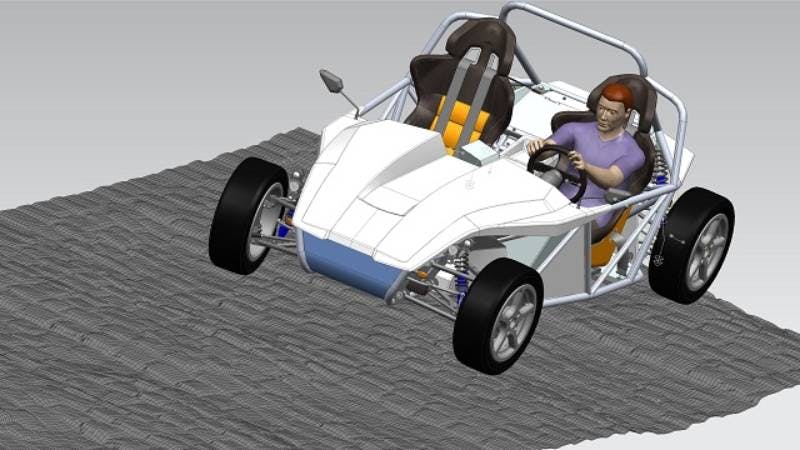Virtual road load prediction is time-intensive and complicated. It requires engineers to model the correct parameters for the tires, driver, a digitized road, and flexible components in the vehicle model to represent the correct behavior of the vehicle.
This webinar demonstrates how to include test-track measurements in simulation. It explains how to conduct road load prediction in hours instead of days, calculating the wheels’ displacement on a virtual test rig based on internal loads. Once validated, learn how durability simulation helps optimize vehicle performance by predicting the impact of material, geometry, and welding changes.
Calculate component loads for durability simulation studies
Defining correct road loads and understanding how they affect individual vehicle components is crucial for successful durability simulation.
Register for the webinar and learn to:
- Reduce cost and time by building a virtual test rig to excite a model
- Perform load prediction without characterizing tires and roads
- Employ an iterative process for early access to vehicle loads
- Optimize and validate the design by balancing weight, strength and durability
- Include advanced materials, weldings and additive manufactured parts in durability simulation
Start from any test measurement to perform road load prediction on the wheels
Any small misalliance between the properties of the model and the real vehicle causes drifts in the simulation leading to unrealistic loads. Simcenter grants you earlier access to real-world vehicle loads using test data for road load prediction.
The Simcenter 3D Motion TWR solution integrates test data and high-fidelity 3D vehicle models. A unique iterative technique calculates equivalent drive signals in the wheel centers and avoids the need for modeling complex items, such as a driver, tires and a digitized test track.
Integrated into a single environment, durability simulation engineers can apply sensors on the digital model and use the displacement signals to calculate the effect of road loads on the individual components and interface points.
Proceed with durability simulation to optimize and validate the design
Once the full vehicle model is validated, durability simulation teams extract components of interest, optimize or evaluate different candidate parts with more advanced simulation and design the best performing component.
This solution goes broader than design optimization and virtual product validation since advanced materials and additive manufacturing can also be integrated. During the webinar, we’ll demonstrate an example of how a component was optimized using additive manufacturing and machine learning to predict local fatigue properties from the real road loads. This transformative approach qualifies for creating lighter and stronger parts.
